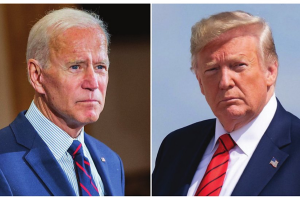The $300 billion annual climate finance agreement adopted at COP29 in Baku is a symbolic milestone, but its inadequacies highlight the persistent gaps in addressing the climate crisis. For developing nations like India, which face disproportionate climate impacts despite contributing minimally to global emissions, this deal feels less like progress and more like a concession to inaction. At the heart of the criticism is the sheer insufficiency of the promised funding.
As India’s delegate aptly put it, the agreement appears to be an “optical illusion” that fails to rise to the enormity of the challenge. While the $300 billion target represents an increase from the earlier $100 billion commitment, it is dwarfed by the estimated $1.3 trillion required annually by 2035 to meaningfully address climate change. For vulnerable countries grappling with rising sea levels, extreme weather events, and loss of livelihoods, the deal offers little assurance. The divisions between industrialised and developing nations were stark throughout COP29 negotiations. Wealthy nations, historically responsible for the bulk of greenhouse gas emissions, were reluctant to commit further amid domestic economic constraints. On the other hand, many developing countries are left reeling from the escalating costs of storms, floods, and droughts.

This deal, despite its headline-grabbing figure, does not include detailed mechanisms to ensure the timely and full delivery of funds ~ a problem evident in the delayed fulfilment of the $100 billion pledge made in 2009. Compounding the issue is the reluctance to expand the list of mandatory contributors. Countries like China, now the world’s second-largest economy, and oil-rich Gulf states continue to evade binding commitments. This imbalance not only undermines the equity principle of climate negotiations but also limits the pool of available resources. Moreover, the agreement sidesteps the critical question of transitioning from fossil fuels to renewable energy. Without binding commitments to phase out carbon-intensive energy sources and triple renewable capacity, the $300 billion annual fund risks becoming a Band-Aid on a gaping wound. Some negotiators pointed to efforts by oil-producing nations to block more ambitious proposals, reflecting the persistent influence of vested interests.
However, despite its flaws, the deal cannot be dismissed outright. It sets a baseline for future action and keeps the dialogue alive. The upcoming COP30 in Brazil, set in the Amazon ~ a critical climate battleground ~ provides an opportunity to strengthen this framework. The focus must shift toward enforceable commitments, equitable burden sharing, and a clear roadmap to limit global warming to 1.5°C. Without urgent reforms, these pledges risk becoming empty promises, leaving vulnerable nations to face the brunt of the climate crisis alone. For India and other developing nations, the path forward lies in sustained advocacy for justice and accountability. The deal may not fully address the climate emergency, but it is a reminder that the fight is far from over. We must ensure that promises translate into action before the costs of inaction become insurmountable.











